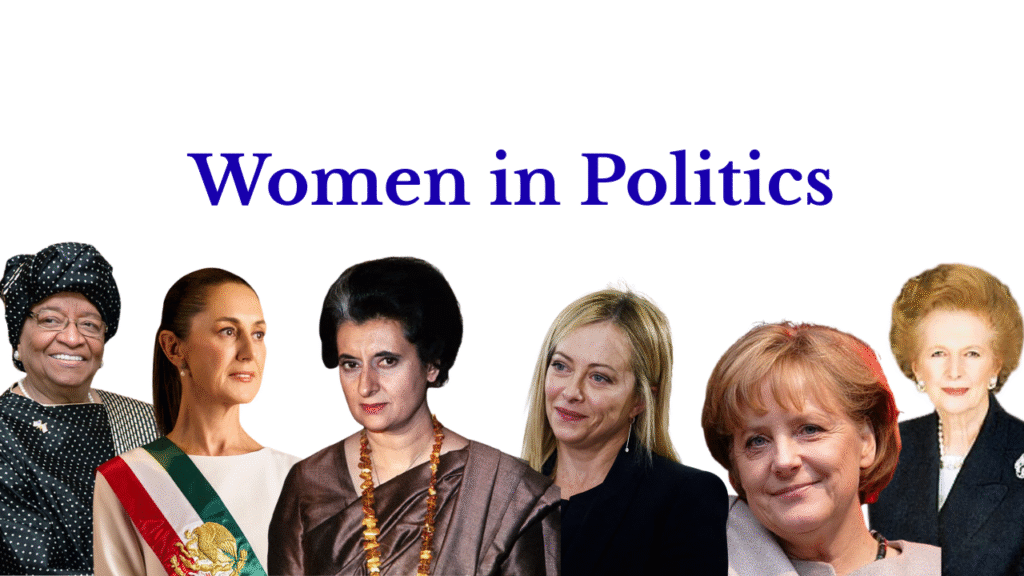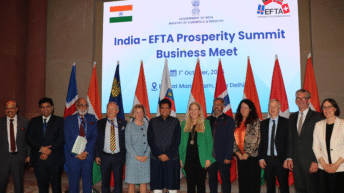
Today, as per a UN Women report, 29 countries are led by women, and several nations have adopted formal feminist foreign policies. Yet women still hold less than a quarter of all ministerial positions worldwide, and gender parity in national legislatures remains distant. This contrast between symbolic progress and real underrepresentation raises an important question: why does the rise of women in high office not translate into equal acceptance of their authority? This article examines the persistent gap between women attaining power and the legitimacy accorded to that power. It moves beyond numbers to analyse how their leadership continues to be filtered through gender norms, where scrutiny of appearance, behaviour, and personal life undermines political authority and fuels a culture resistant to female leadership.
One way to understand this is through the distinction between descriptive representation: women formally occupying positions, and substantive representation, where they are treated as legitimate power-holders. Extensive feminist political communication research shows that media and political actors frame female authority through a “gendered mediation,” placing disproportionate emphasis on looks, tone, and personality, while treating men’s leadership as the neutral, default standard. Thus, even as more women enter high office, the terms of their acceptance remain unequal.
This resistance is not abstract. While promoting her book The Look, former First Lady Michelle Obama observed that the United States is still unprepared to accept a woman president, stating, “As we saw in this past election, sadly, we ain’t ready…That’s why I’m like, don’t even look at me about running ‘cause you all are lying. You’re not ready for a woman.” Her remarks reflected not just electoral outcomes but a deeper skepticism about female authority: women must not only win office; they must prove they deserve to lead. Despite existing for two and a half centuries as a democracy, the United States has never elected a woman to its highest executive office. Obama’s critique highlights that representation alone does not guarantee legitimacy. Voters may endorse women symbolically while resisting them substantively as decision-makers.
A similar dynamic was visible in Mexico City, where President Claudia Sheinbaum, the country’s first female leader, was physically harassed during a public walk. A man approached her from behind, attempted to kiss her on the neck, and placed his hands on her body before being stopped by security. This was not merely a breach of personal space but a stark reminder that even a head of state can be subjected to sexual harassment, revealing the fragile status of female authority and women in general in public spaces.
The same gender-based dismissal appears in global diplomatic settings. At the Gaza Peace Summit in Sharm El-Sheikh, President Donald Trump publicly commented on Italian Prime Minister Giorgia Meloni’s appearance, turning a high-stakes diplomatic moment into a commentary on her looks. By reducing her to “a beautiful young woman,” he shifted the frame from political capability to physical appearance. Women in such situations face a no-win scenario: rejecting the comment risks being labelled humourless or aggressive; smiling through it reinforces the reduction of their political identity. This moment highlights how easily female authority can be trivialised, even on the world stage.
At the same time, subtle infantilisation also persists. Albanian Prime Minister Edi Rama’s exaggerated bows and references to Meloni as “Your Majesty,” alongside viral memes about her interactions with male leaders, show how gender stereotypes infiltrate public discourse. Instead of focusing on policy agenda, media coverage often indulges in humour, spectacle, or looks-based commentary, diverting attention from political substance.
Data also reveals that this is not limited to individual incidents. According to the Reykjavík Index, only 41% of Germans felt “very comfortable” with a woman as head of government—even after Angela Merkel’s 16 years in office. Similar figures appear across democratic and non-democratic contexts, indicating that the presence of female leaders does not automatically alter public perception. This gap between experience and acceptance demonstrates that deep-rooted social norms continue to shape attitudes.
A historical lens shows that such resistance to female authority is not new. During the 1971 Bangladesh Liberation War, US President Richard Nixon referred to Prime Minister Indira Gandhi as “the old witch”, revealing how even the leader of one of the world’s oldest democracies could be referred to with demeaning slurs. Margaret Thatcher, despite her political dominance, was routinely caricatured in British media as shrill, hysterical, or unfeminine, forcing her to lower her voice pitch through vocal training to be taken seriously. Liberia’s Ellen Johnson Sirleaf, Africa’s first elected female president, was often dismissed as “too soft”, despite leading her country through post-conflict reconstruction. These historical examples show that the often unsympathetic scrutiny female leaders face today has a long lineage.
This pattern of resistance also has direct implications for countries that have formally adopted a feminist foreign policy. At its core, feminist foreign policy seeks to restructure international relations by placing gender equality, human security, and inclusivity at the centre of diplomacy, defence, development, and trade. However, the credibility of such a policy depends on whether women leaders themselves are recognised as legitimate actors in the international arena. When female heads of government are sexualised and trivialised, it exposes a contradiction: states may endorse gender equality in their external engagements, while failing to dismantle the gender hierarchies that shape political interactions at home and abroad. In other words, feminist foreign policy cannot be transformative if the women implementing or representing it are not granted equal authority in diplomatic spaces. As long as leadership is subconsciously coded as male, even progressive policy frameworks risk becoming symbolic rather than structural, highlighting that the struggle for gender-equal diplomacy begins not only in policy documents but in the everyday recognition of women’s political power.
In conclusion, the rise of women in executive positions marks an important milestone, but it does not equate to full legitimacy or equal authority. The persistent scrutiny of their appearance, the condescension they face, and the latent distrust detected in public opinion show that societies have yet to accept women on the same terms as men. True progress requires more than electing women, it requires dismantling the old norms shaping political evaluation. This includes media reforms, political party pipelines that promote women beyond token positions, gender-sensitive diplomatic protocols, and public education that normalises women in power. Only when women leaders are judged on competence, vision, and governance rather than appearance or personality, will representative positions translate into real authority.






Add comment